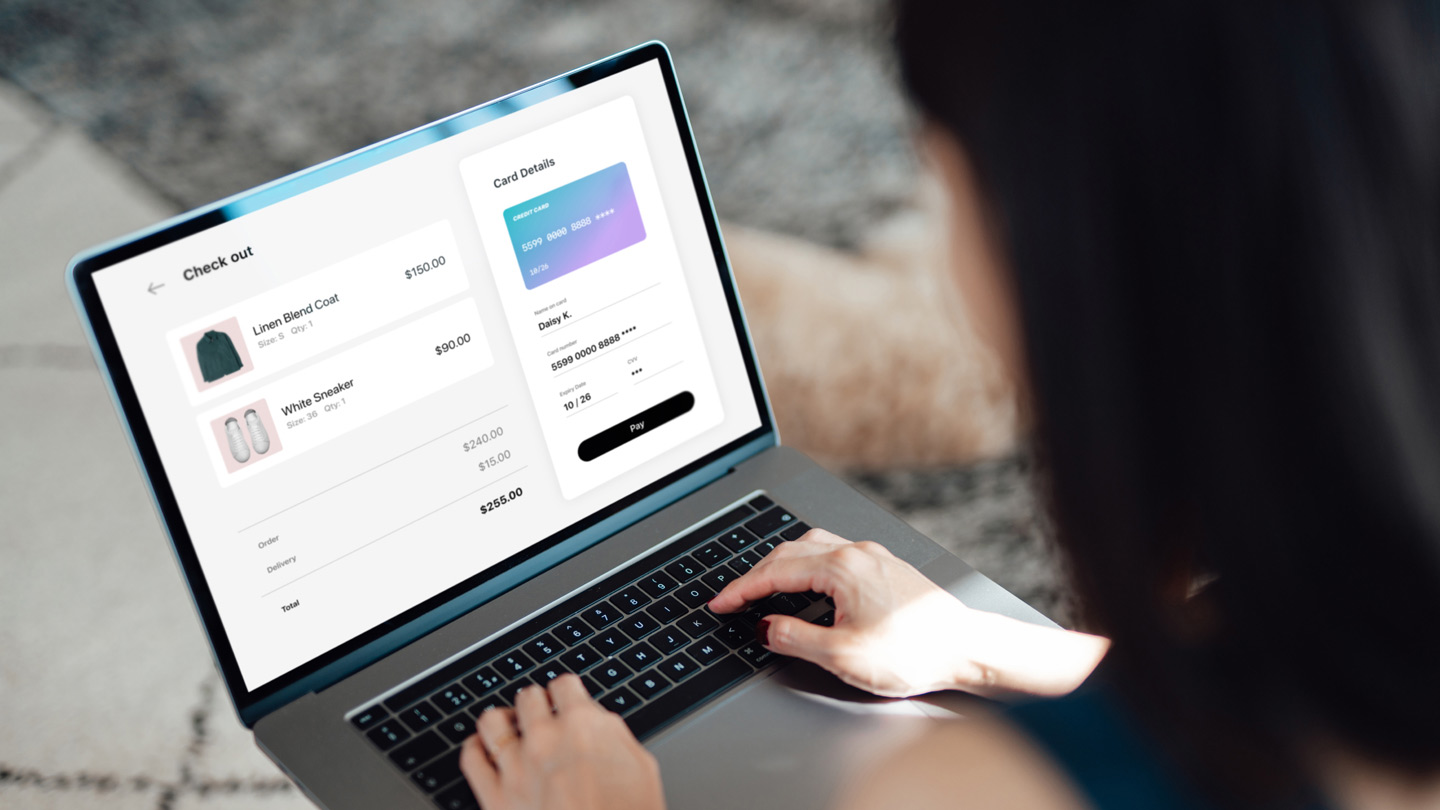
The total amount of payments made with a commercial card is expected to reach $1 trillion by 2024,1 which reflects the growing number of businesses that are transitioning away from check payments and adopting commercial card programs.
A commercial card is a credit card or virtual card used by businesses to make purchases on behalf of the company. Purchases may include business supplies, maintenance, repair, operational expenses or travel. A card program helps businesses manage their expenses by centralizing all charges made by their employees in a single place. For example, the table below highlights four commercial card programs provided by J.P. Morgan:
Commercial card programs

One Card
Typical use: Business-to-business purchases and travel and entertainment expenses.
Ideal for: Organizations that want a single card program for any type of spend, from travel to everyday business expenses. Learn more.

Purchasing Card
Typical use: Business-to-business purchases.
Ideal for: Organizations that want to simplify and manage their business-to-business purchases, such as office equipment, supplies and computer hardware or software.
Learn more.

Corporate Card
Typical use: Travel and entertainment expenses.
Ideal for: Organizations that want to simplify the management of their business travel and entertainment expenses. Learn more.

Virtual Card
Typical use: Payment at time of invoice for goods and services.
Ideal for: Organizations that want all the benefits of a card, with enhanced controls, data capture and integration. Learn more.
Though every business is unique and may experience different results, here are the top four reasons why more businesses are eschewing paper checks in favor of cards:
- Reducing manual, paper-based processes
- Earning more money back into your business
- Creating more robust reporting into payments activity
- Protecting against fraud and misuse
Commercial cards can reduce manual, paper-based processes
The traditional procure to pay process involves a lot of paper—for example, purchase orders, invoices, shipping notices and check payments—making it costly and inefficient. And oftentimes, it can take up to 11 steps to manually process and pay for each purchase.
With so many steps in the process, it’s not hard to imagine how payments can get delayed—especially when you consider additional factors outside of your control like sending your check payment through the mail. Any delay can trigger ripple effects throughout supply chains. If one firm fails to pay its supplier on time, the next may be delayed in paying its own and so on.
That’s why commercial cards offer a good alternative. When paying with a card for goods and services, businesses are digitizing their procurement processes. Not only does this reduce labor- and time-intensive work, but as the world locked down during the global pandemic, electronic payment processes provided a new level of business resiliency by allowing businesses to keep payments flowing.
Commercial cards can put money back into your business
Manually processing low-value, high-frequency payments is costly. For instance, processing a $15 purchase may cost the same as processing a $1,500 purchase. This adds up when you consider that the cost to process a check may range between $4 and $20. Not to mention that check fraud also accounts for the largest dollar amount of organizations’ financial loss and is the most susceptible payment type to attacks.2
In light of these figures, organizations are steadily increasing their capture of low-value transactions with commercial cards. One survey found that businesses used commercial cards for nearly three-quarters of transactions that totaled less than $2,500; and for purchases costing between $2,500 and $10,000, a card was used about half the time.3
Not only is there a cost savings, but businesses can also earn money back into their business through an annual cash rebate. Or businesses might opt for a chance to earn rewards points that can be redeemed across a range of categories like cash back, travel (air, hotel, car rental), gift cards or merchandise. Of course, what’s best for the business depends on its unique needs.
Which commercial card is right for my business?
Take our commercial card quiz to find the right card program for your business.
Commercial cards can create more robust reporting
By centralizing more of your business payments onto a commercial card program, you gain more visibility into your spend, which allows for more robust reporting. From there, you can optimize your program further, for example, looking at transaction data to ensure your cards are being used for the right purposes. Or perhaps you might identify new areas of spend that can be placed onto a commercial card, if not done so already.
Other ways reporting can help your business is by providing employees with access to real-time insights into their card spend, so they may self-service their accounts, know their credit limit and understand how much is being used.
Commercial cards can help protect against fraud and misuse
Nearly three-quarters of organizations said they were targets of an attempted or actual payments fraud in 2020, according to a recent AFP survey. Within that, check and wire transfer ranked as the most susceptible, whereas commercial card was seen as less prone to attacks.
Commercial cards offer a robust set of security and controls that help mitigate fraud and misuse. For example, businesses can set merchant category codes (MCC) to limit where the cards may be used. They may also cap the amount spent on a card. And with a centralized view into all spending, irregular or high-risk purchasing patterns can be flagged for easier remediation.
Learn how businesses are creating more value from the way they pay by using commercial cards
Not all products and services are available in all geographic areas. Eligibility for particular products and services is subject to final determination by JPMC and or its affiliates. This material does not constitute a commitment by any JPMC entity to extend or arrange credit or to provide any other products or services and JPMC reserves the right to withdraw at any time. All services are subject to applicable laws, regulations, and applicable approvals and notifications.
The views and opinions expressed herein are those of the author and do not necessarily reflect the views of J.P. Morgan, its affiliates, or its employees. The information set forth herein has been obtained or derived from sources believed to be reliable. Neither the author nor J.P. Morgan makes any representations or warranties as to the information’s accuracy or completeness. The information contained herein has been provided solely for informational purposes and does not constitute an offer, solicitation, advice or recommendation, to make any investment decisions or purchase any financial instruments, and may not be construed as such.
Although this transmission and any links/attachments are believed to be free of any virus or other defect that might affect any computer system into which it is received and opened, it is the responsibility of the recipient to ensure that it is virus free and no responsibility is accepted by JPMorgan Chase & Co., its affiliates, as applicable, for any loss or damage arising in any way from its use.
JPMorgan Chase Bank, N.A. Member FDIC.
JPMorgan Chase Bank, N.A., organized under the laws of U.S.A. with limited liability.







